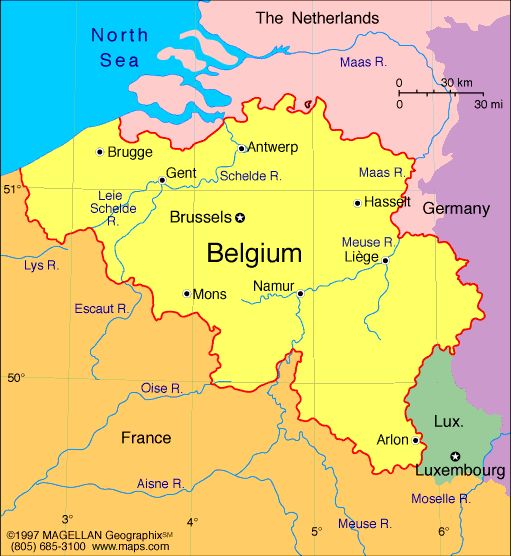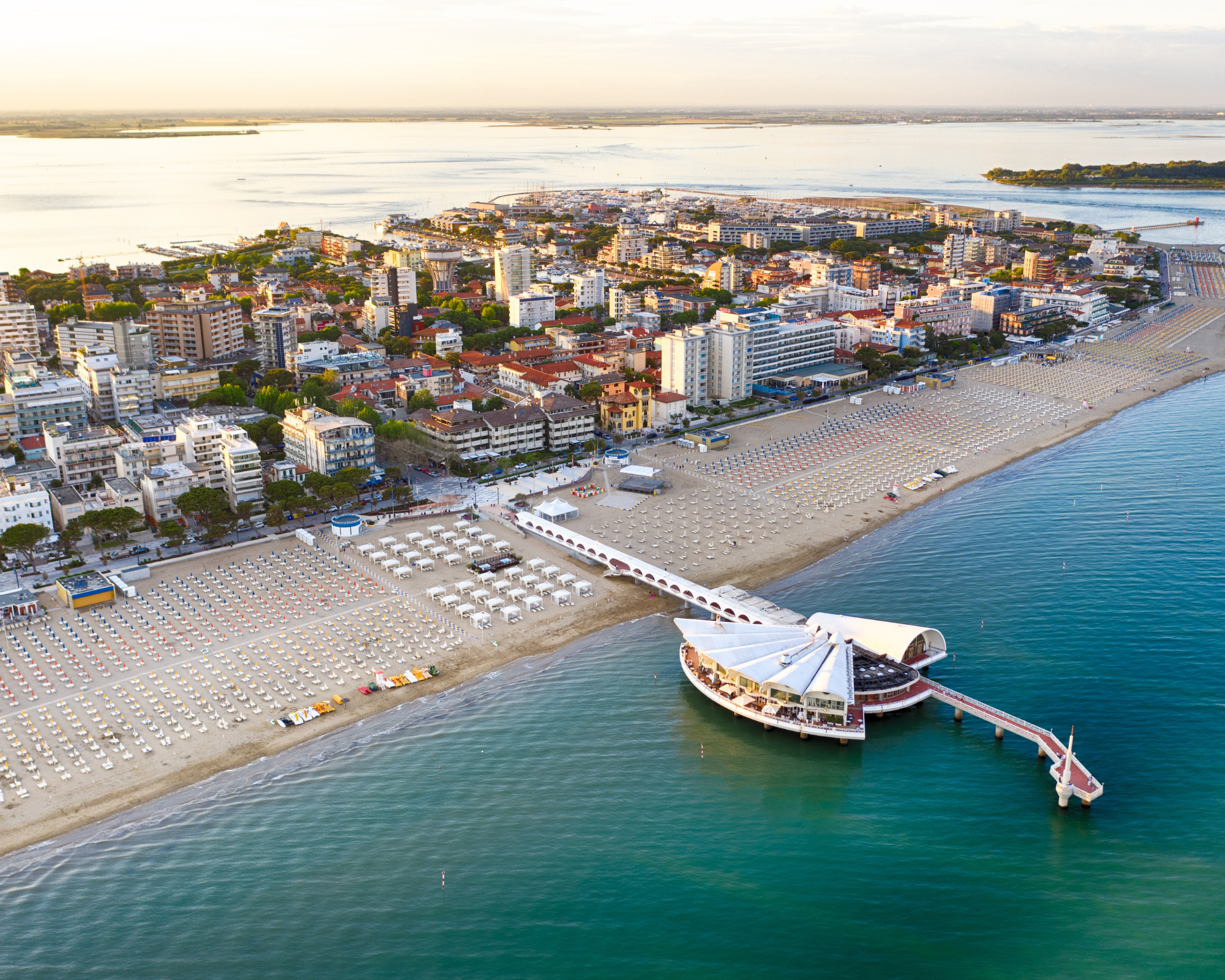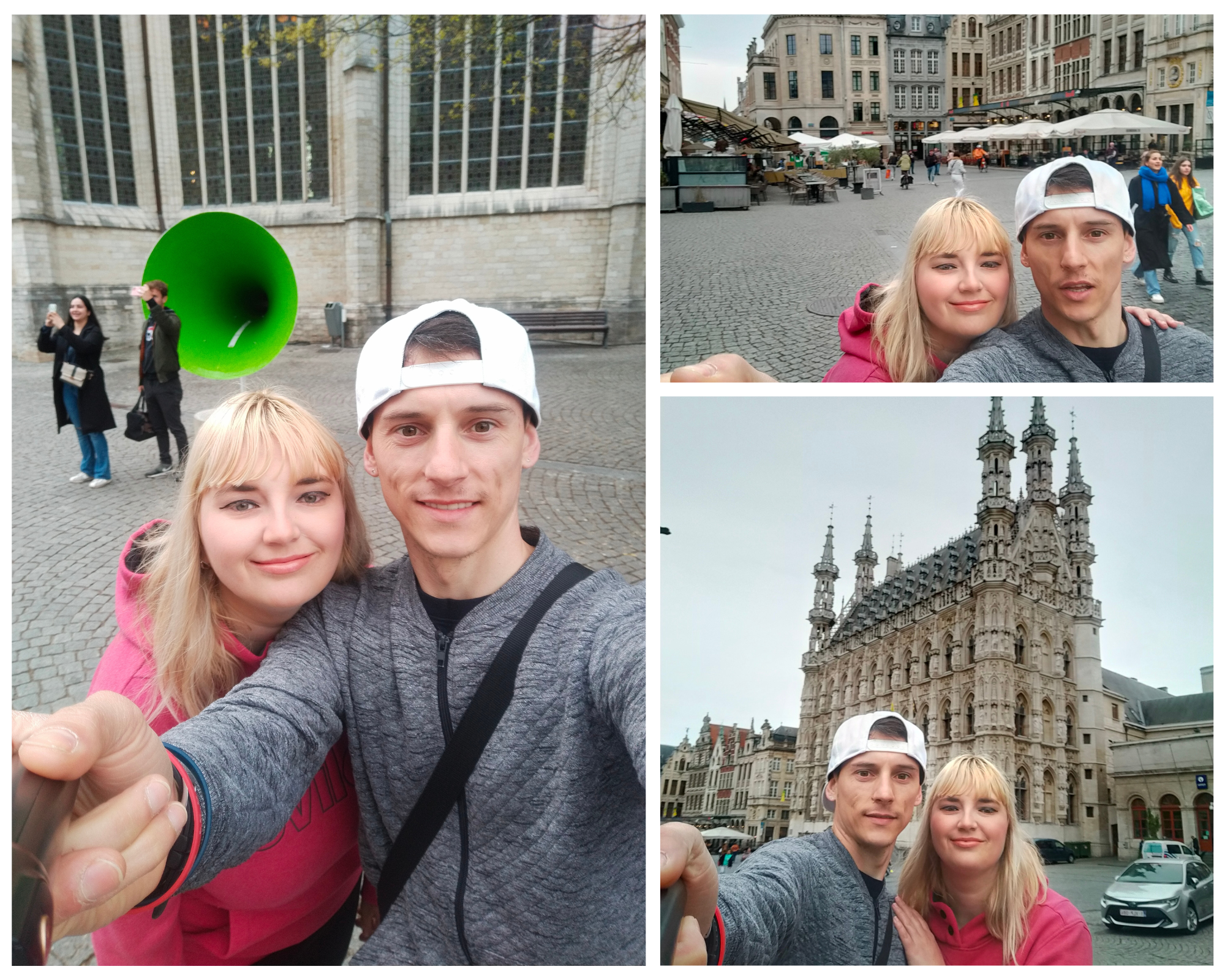
Exploring Liege and Leuven in 2024: The Amazing Belgium
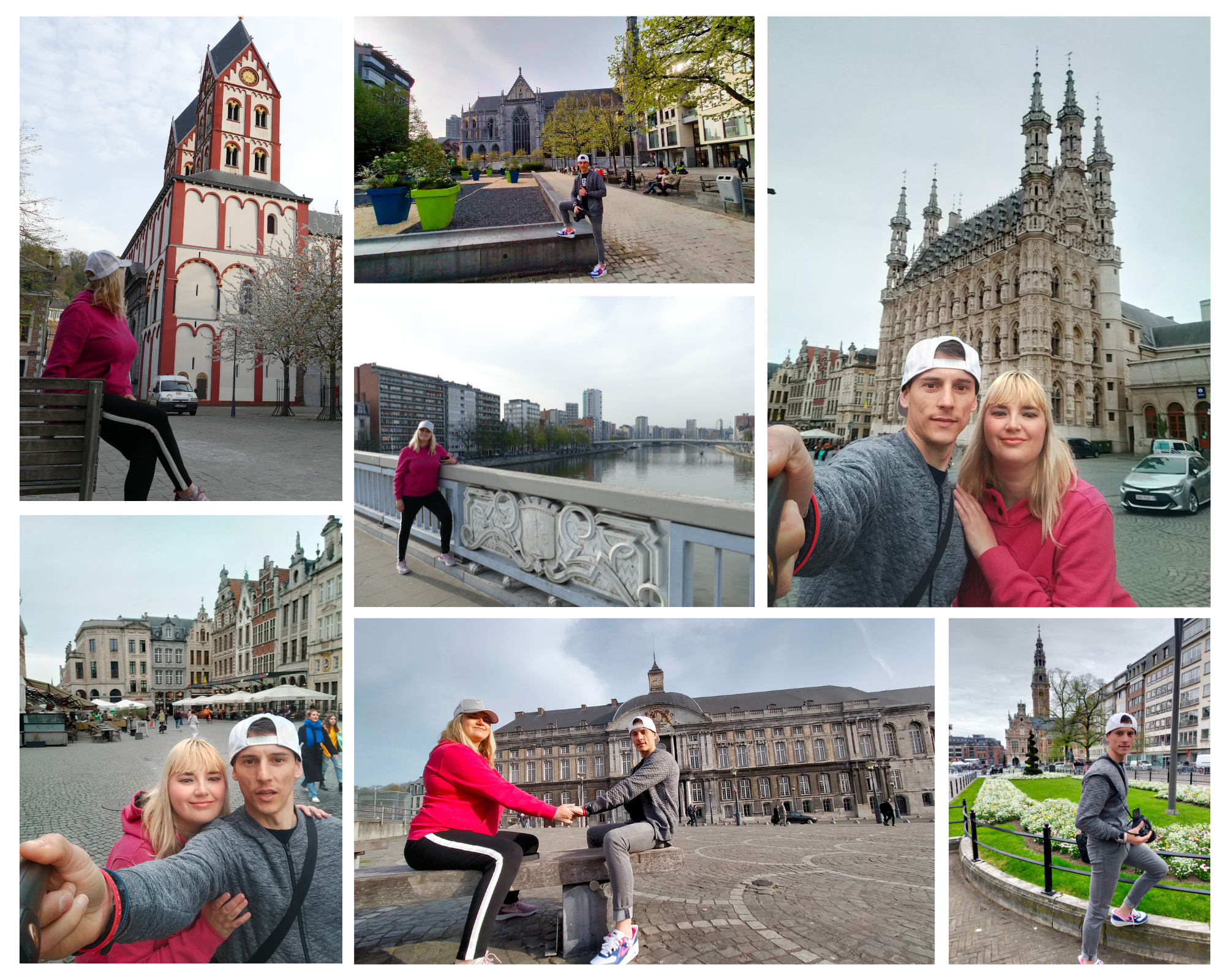
Source : Traveldreamdiary.com
Informations
Liège is the capital of the Belgian province of Liège as well as a city and municipality in Wallonia. The city is located in Belgium’s east, in the Meuse Valley, close to the borders with Germany and the Netherlands. The Meuse meets the Ourthe river in Liège. The city is a part of Wallonia’s former industrial spine, the Sillon industriel. It continues to be the region’s main hub for both the arts and economy.
Temperature: The high season lasts from mid-April to mid-October. The tourist season reaches its peak in July and August.
Language: The official languages are Dutch, German and French.
Currency: Euro
Food Prices: Meal in a cheap restaurant=15 EUR, Meal for 2 People, Mid-range Restaurant=65 EUR
You can find more information about the visa here.
Things to do
Notice: Several of the links below are affiliate links, which means that if you click over and make a purchase, I will get a commission at no extra cost to you. Here is a link to our complete affiliate disclosure.
Montagne de Bueren
The 374-step Montagne de Bueren staircase in Liège, Belgium, is pronounced [mɔ̃taɲ də byʁɛn, -ʁən] in French. The staircase has the name of Vincent de Bueren, who in the fifteenth century defended Liège from an attack by Charles the Bold, Duke of Burgundy. In 1881, it was constructed as a memorial to the 600 troops who lost their lives in the conflict. According to The Huffington Post’s list of the Most Extreme Staircases of 2013, Montagne de Bueren was the top staircase. Belgian explorer and adventurer Louis-Philippe Loncke simulated an ascent of Mount Everest in July 2020 by climbing and descending the stairway 135 times while carrying a 15 kilogram (33 lb) backpack in response to the COVID-19 pandemic’s effects in Belgium.
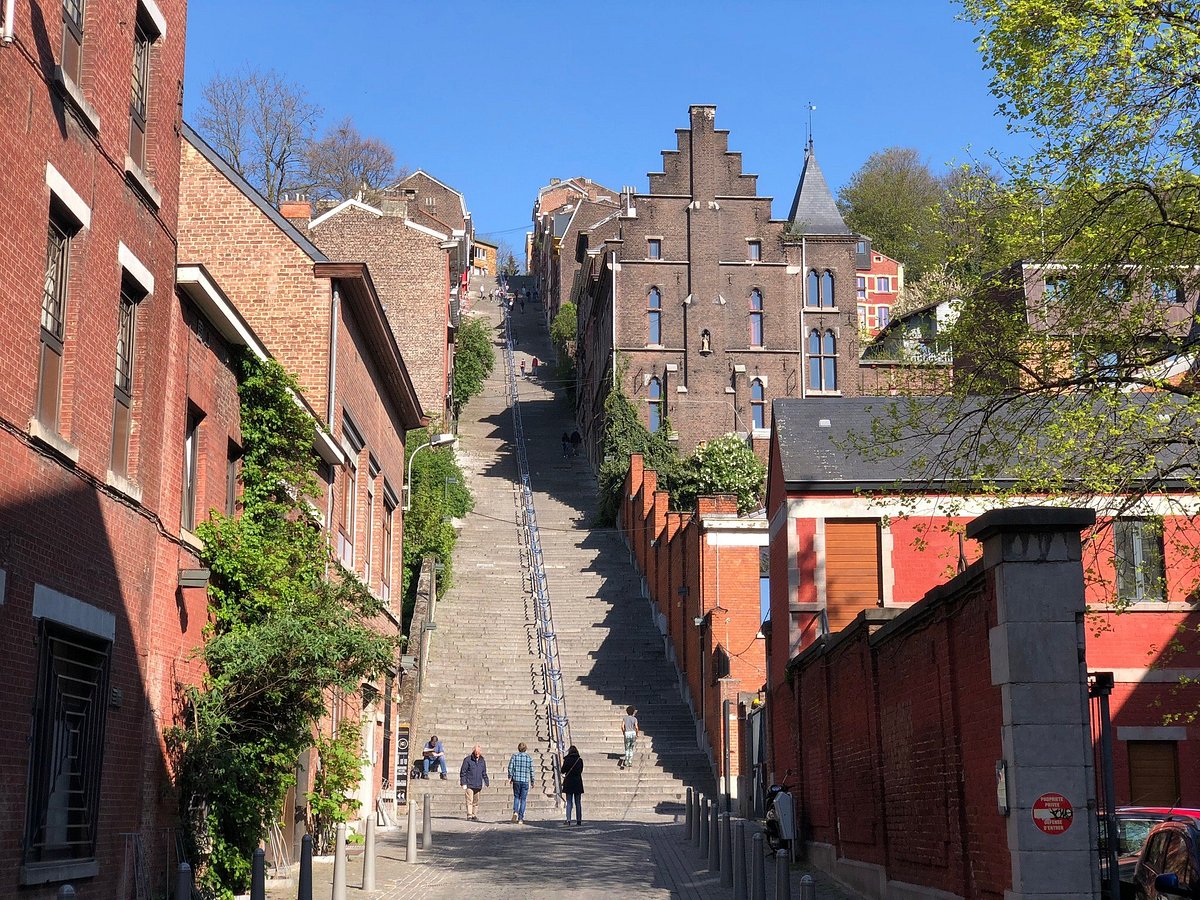
Source : Facebook
La Boverie
The museum known as La Boverie (pronounced [la bɔvʁi] in French) is located in Liège, Belgium. May 2016 saw its opening. It is located in the former Palais des beaux-arts de Liège, which was constructed in 1905 for the Liège International in the Parc de la Boverie. Before becoming the Musée d’art moderne (later known as the Musée d’art moderne et d’art contemporain, or MMAC) from 1980 to 2011, the building housed the city’s Musée des Beaux-Arts’ collections of prints and drawings (1952–1980) and the Académie royale des Beaux-arts’ collections of Walloon art (1970s–1980). In 2011, the Walloon, prints, and drawings collections were combined with MMAC to create a new collection called “musée des Beaux-Arts.”
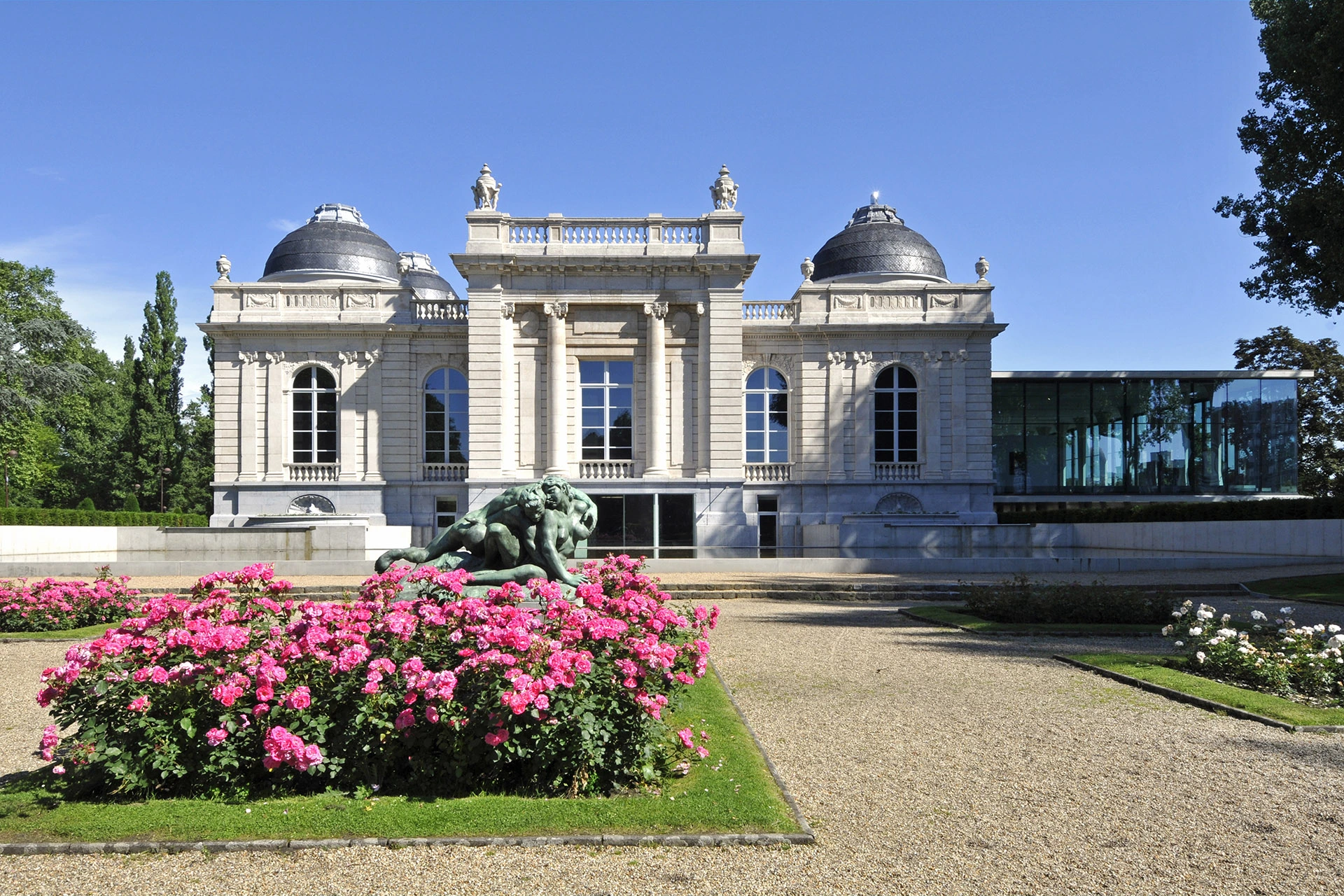
Source : Facebook
Opéra Royal de Wallonie-Liège
Situated on Place de l’Opéra in the heart of Liège, Belgium, lies the Opéra royala, also known as the Royal Opera of Wallonia. It is one of the three principal opera theaters in the kingdom, along with La Monnaie and the Flemish Opera. Since its founding, the organization has been housed in the Royal Theater in Liège, a structure lent by the city and opened for business on November 4, 1820. Due to its strategic location at the intersection of France, the Grand Duchy of Luxembourg, Germany, and the Netherlands in the center of the Euregio, it draws a sizable number of visitors from both Belgium and outside. The organization that resides in the building in issue may also be referred to as Opéra national de Wallonie.Under the condition that a theater be constructed there, King William of Orange kindly gave the city of Liège the land and materials of the former Dominican convent in 1816. Mademoiselle Mars placed the first stone on July 1, 1818. Constructed in accordance with Auguste Dukers’ blueprint, the neoclassical theater boasts a vast parallelepiped shape. A marble colonnade that spans the ground floor’s arcades and is bounded by a balustrade adorns the building’s main face. On November 4, 1820, the Royal Theater of Liège opened.
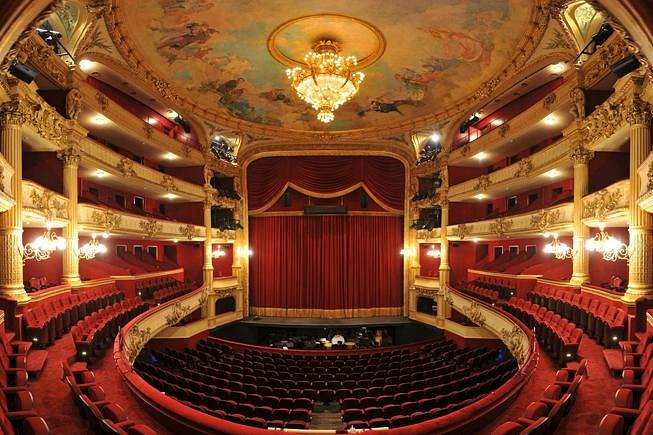
Source : Facebook
Saint Bartholomew's Church
Located in Liège, Belgium, the Collegiate Church of St. Bartholomew is a Roman Catholic collegiate church (French: Collégiale Saint-Barthélemy).[1] Established beyond the city walls, the huge westwork, with twin towers that were rebuilt in 1876, was erected in coal sandstone, with the chancel completed in the late 11th century and the rest of the structure completed in the late 12th century. Like the majority of old religious structures, it changed over the ages. However, its building maintained a strong Meuse Romanesque—Ottonian architectural identity. Two further aisles were added, a neoclassical gateway was opened in the westwork’s walls, and the interior was redecorated in the French Baroque style throughout the 18th century. The western section’s interior has just been brought back to its original design.
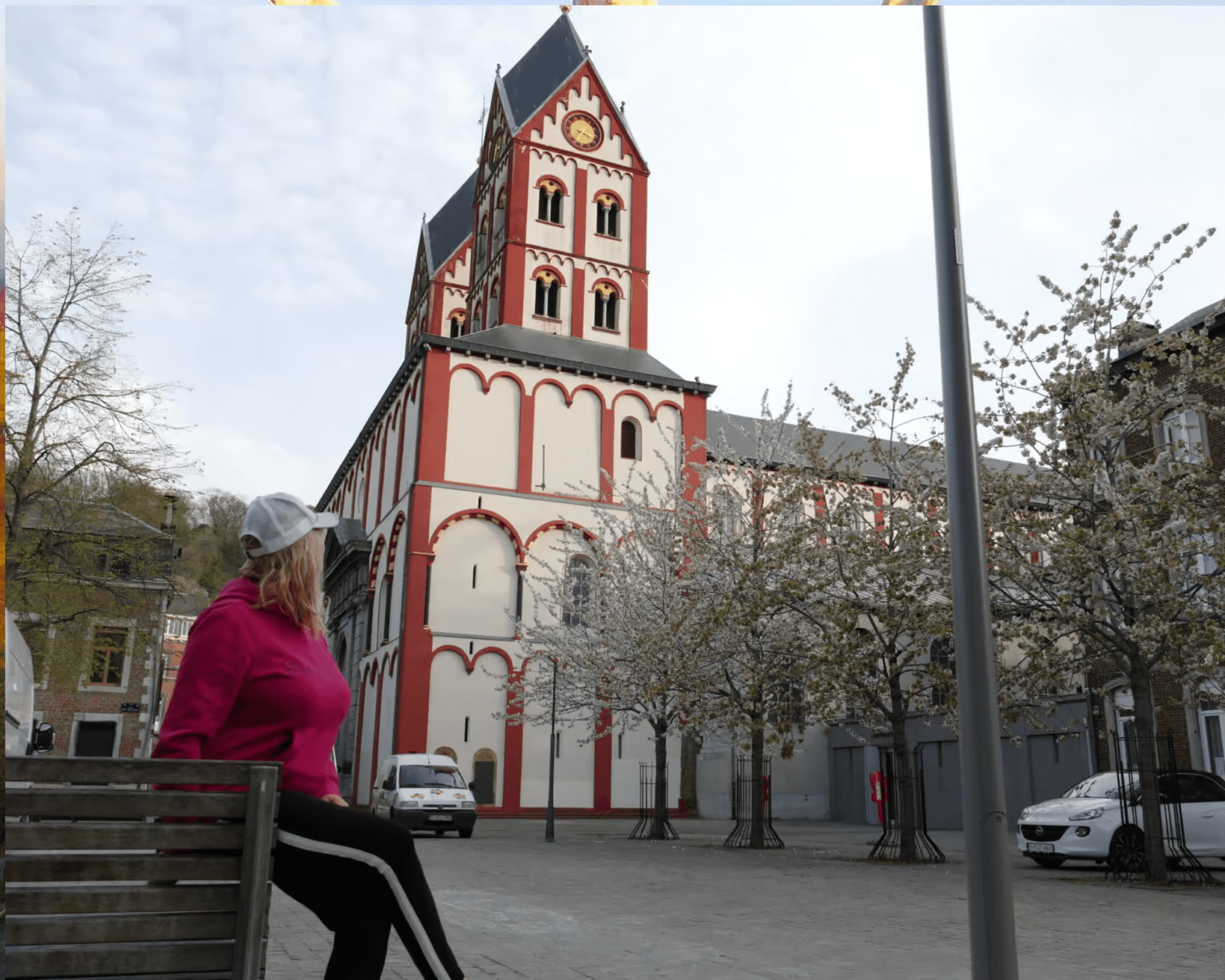
Source : Traveldreamdiary.com
Aquarium-Museum of Liège
The University of Liège’s Aquarium-Museum honors both the history of natural science and the aquatic realm. It was established on November 12, 1962, inside the Zoology Institute of Liège, which also houses the House of Science. It saw one million visitors in 1991, and it will see four million in 2026! Because of its accurate recreation of aquatic settings, the Aquarium-Museum, which is a part of the Museum & Cultural Center of the University of Liège, is also a research and teaching tool. It joined the European Association of Zoos and Aquariums (EAZA) in 1993 after first joining the European Union of Aquarium Conservators (EUAC) in 1972.
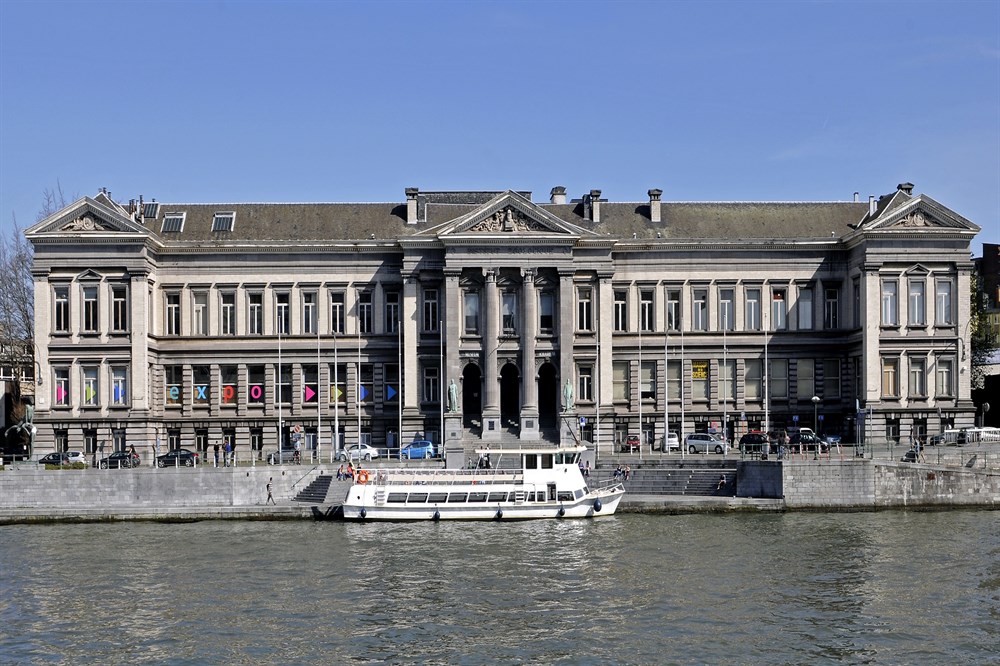
Source : Facebook
St. Paul's Cathedral
In Liège, Belgium, there is a Roman Catholic cathedral known as Liège Cathedral, also known as St. Paul’s Cathedral (French: Cathédrale Saint-Paul). The structure was originally built in the tenth century, reconstructed in the thirteenth and fifteenth centuries, and then restored in the middle of the nineteenth. Due to the collapse of Saint Lambert’s Cathedral in 1795, it was converted into a Catholic cathedral in the 19th century. The Diocese of Liège has its seat there.The historic Liège cathedral, St. Lambert’s, was demolished during the French Revolution. Following the revolution, the college church known as St. Paul’s was given a higher status and is now known as Liège Cathedral.
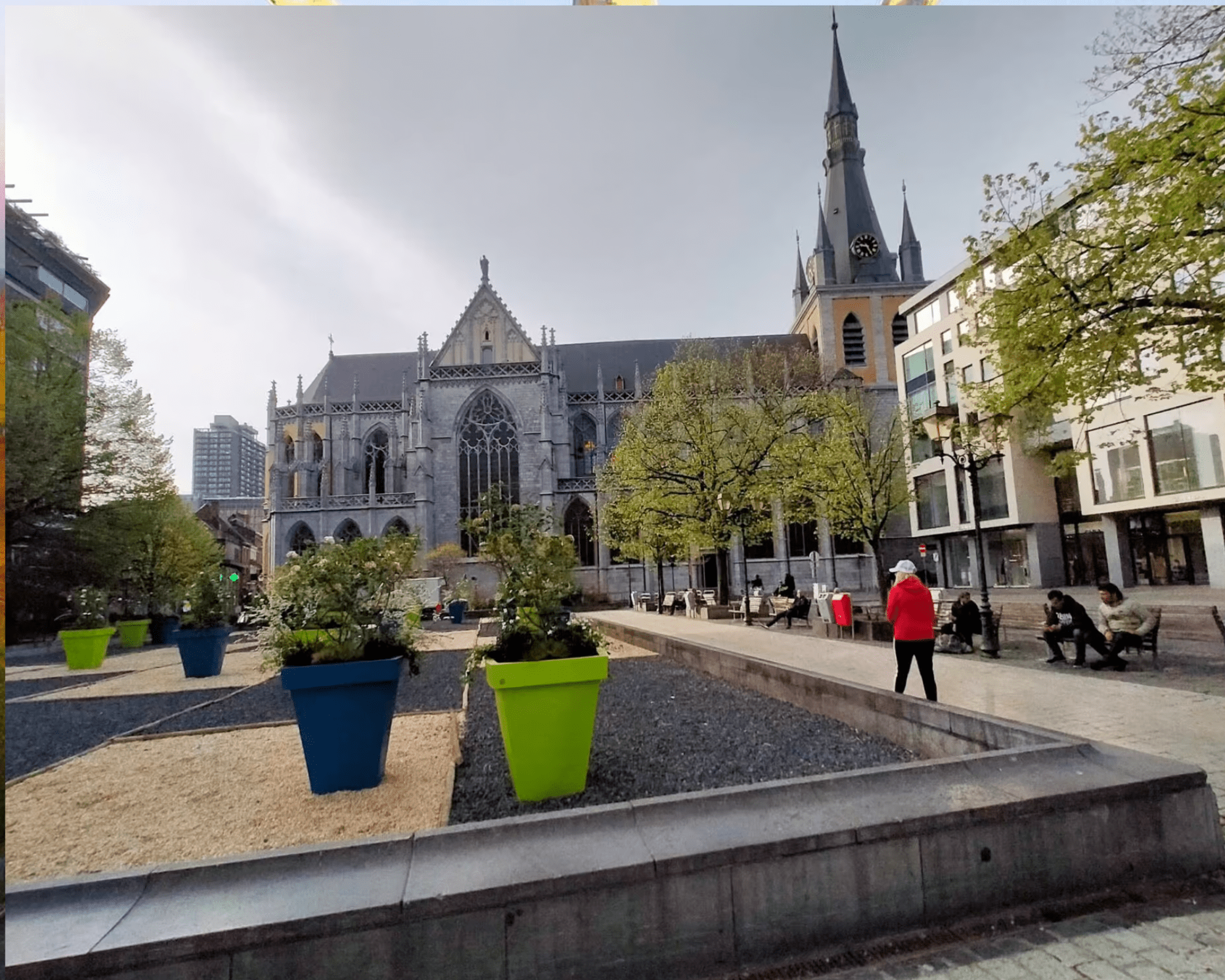
Source : Traveldreamdiary.com
Museum of Walloon Life
The new museum course will be marked by interactives, films, sounds, and noises. Through a range of themes and artifacts, you will learn about life in Wallonia from the 19th century to the present. Nothing has been overlooked when it comes to geography, history, revival, economy, everyday life, consumerism, religions and beliefs, holidays, rights, knowledge, crafts, art, and cinema! A puppet theater or theater that transmits the repertory of the Liège puppet theater or theater is a genuine conservatory of popular arts and customs.
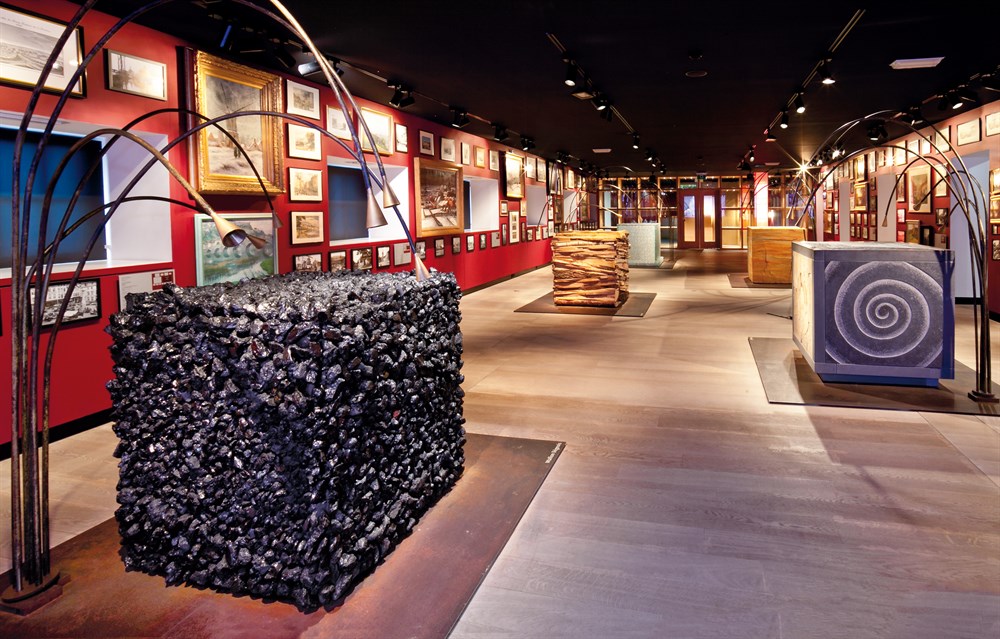
Source : Facebook
The Palace of the Prince Bishops
Located on the Place Saint-Lambert in the heart of Liège, Belgium, is the historic Palace of the Prince-Bishops (also known as the Palais des Princes-Evêques). It previously faced the imposing Cathedral of St. Lambert and served as the palace of the Prince-Bishops of Liège. The Provincial Palace, or the provincial administration building of Liège, is currently housed there along with the Palace of Justice of Liège.Where the Cathedral of St. Lambert once stood, the Palace of the Prince-Bishops now stands at the end of the Place Saint-Lambert, the commercial hub of Liège. The current palace was preceded by two structures. Bishop Notger constructed the first, integrated palace with the walls in 1000 CE, but it was destroyed by fire in 1185. The palace was rebuilt during Rudolf’s reign at Zähringen. In 1505, this edifice was set on fire and sustained significant damage during the Burgundian siege of the city.
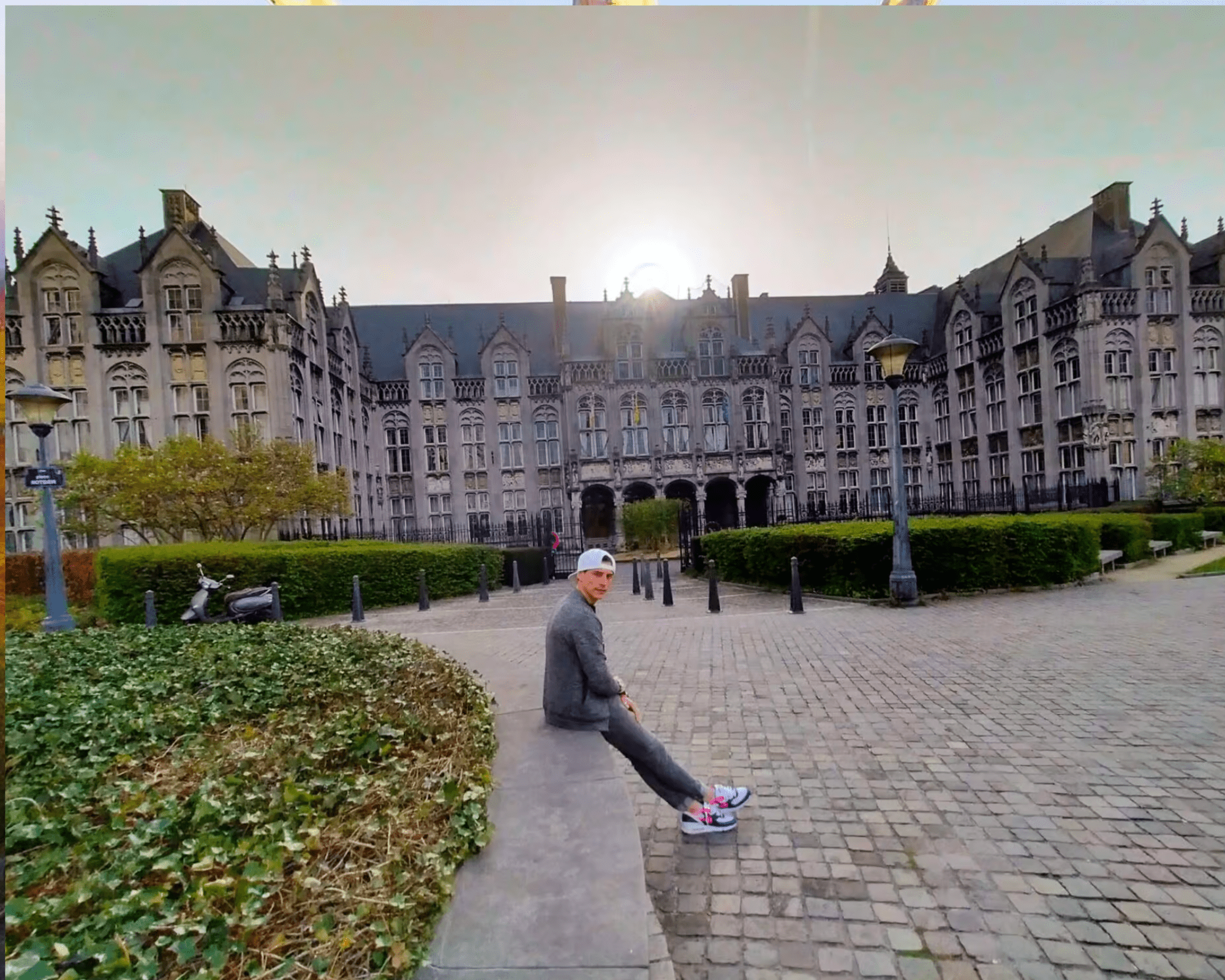
Source : Traveldreamdiary.com
Leuven's Groot
Situated south of Leuven’s city, the Groot Begijnhof is a fully restored medieval sector with a dozen streets that function as a well-preserved beguinage. It is one of the biggest beguinages still standing in the Low Countries, spanning over 3 hectares (7.4 acres) and housing about 300 flats spread among nearly 100 homes. It extends along both banks of the Dijle River, which forms an island inside the beguinage when it divides into two canals. The beguinage’s sections are connected by three bridges. The University of Leuven owns the entire beguinage, which is utilized as a campus, mostly for housing academics.
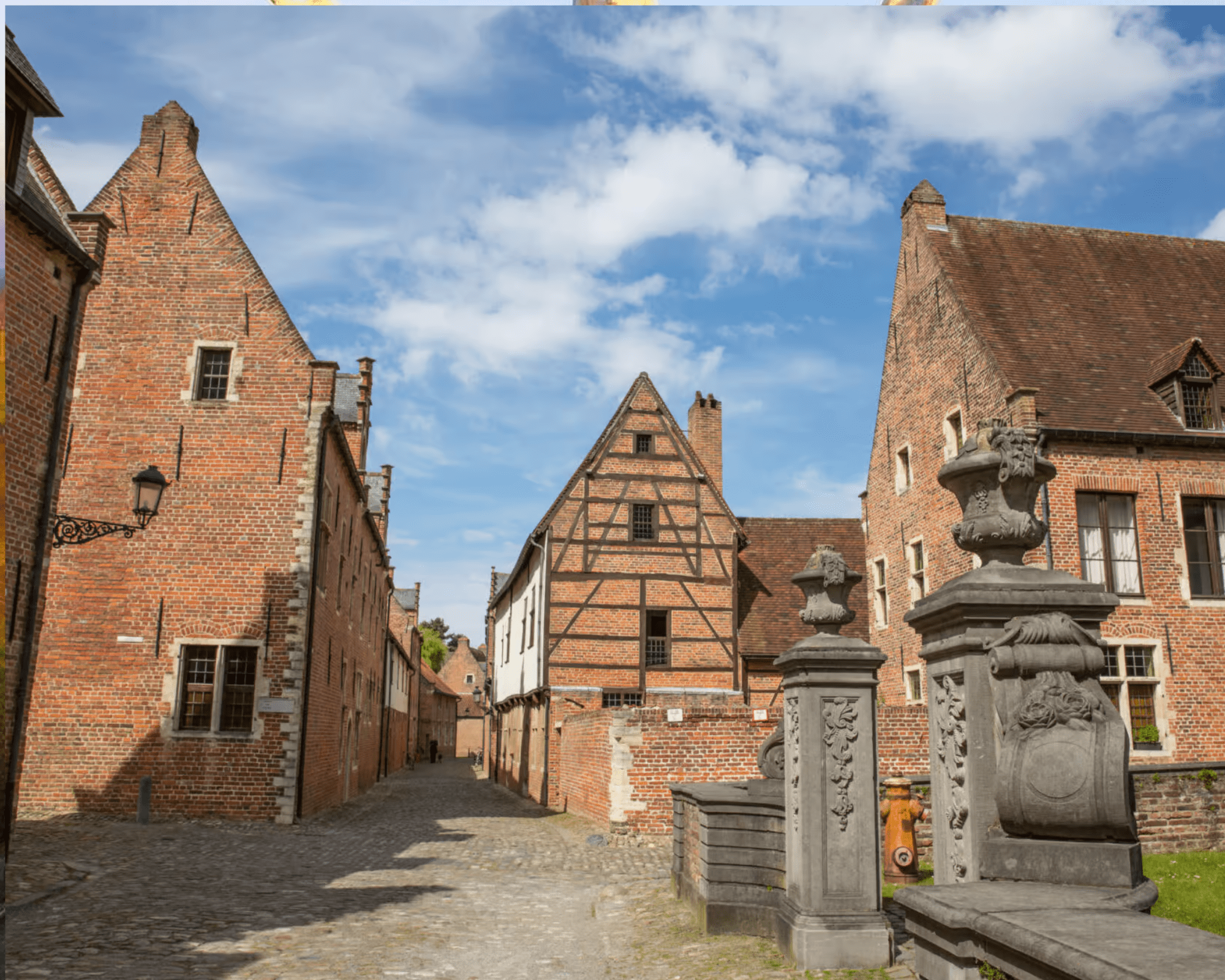
Source : Facebook
The Oude Markt
The Oude Markt is a rectangular area in the heart of Leuven that is mostly used by businesses that provide culinary services. For this reason, the world’s longest bar is responsible for the moniker. When the first stone wall was constructed in 1150, the square—which was the Counts of Leuven’s residence—was granted market rights, enabling the development of economic activity. Up to three times a week, the market was held. Even though the market was spared from some of the bombardment during the two world wars, reconstruction was still required.
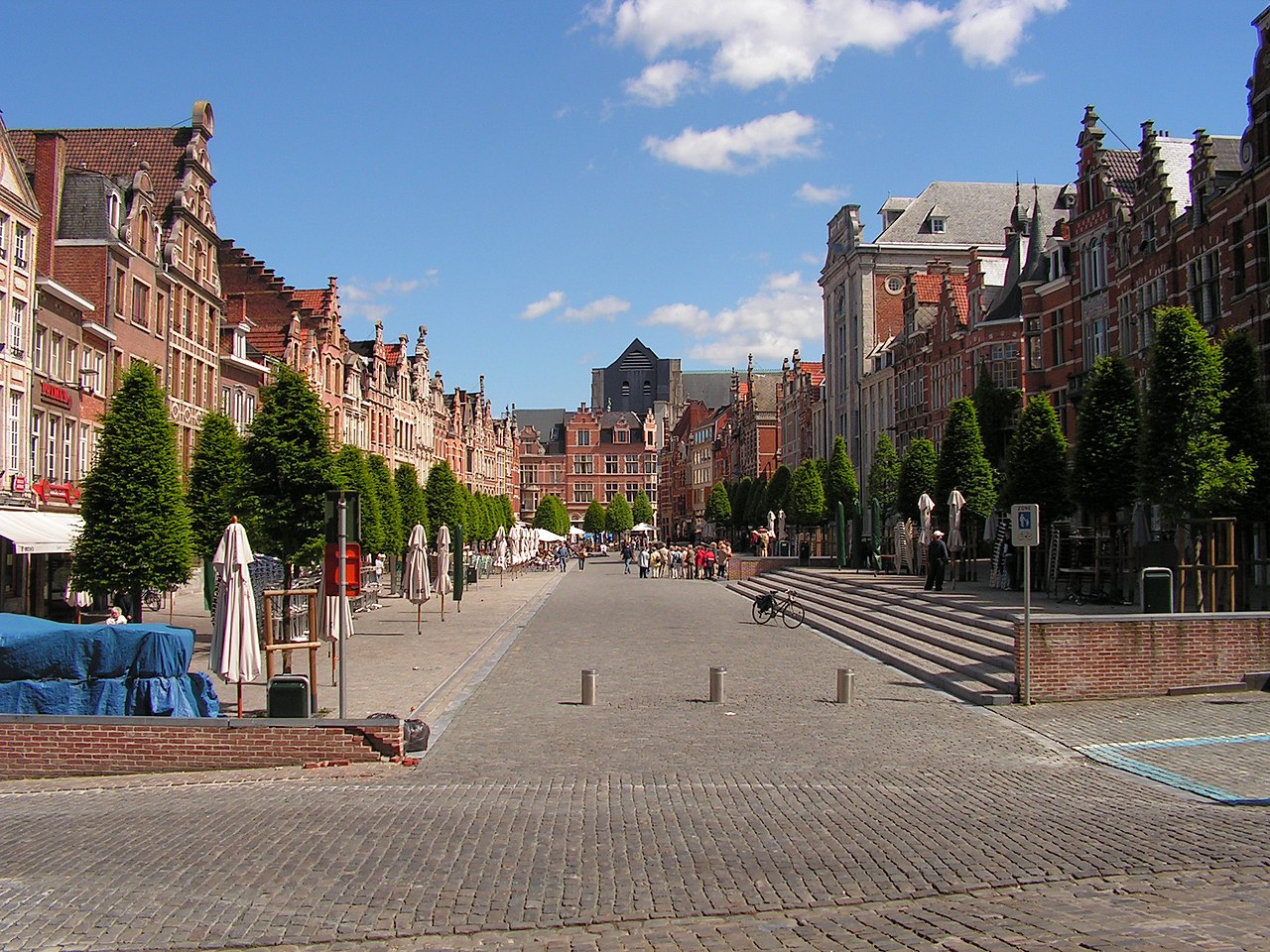
Source : Facebook
City Hall of Leuven
The iconic Town Hall of Leuven, Flemish Brabant, Belgium, is located across the imposing St. Peter’s Church on the city’s Grote Markt. Constructed in the late-Gothic Brabantine style between 1439 and 1469, this architectural marvel is renowned for its elaborate details resembling lace.At the location of an earlier Town Hall, work on a bigger complex of municipal buildings began in 1439, with the structure that is now known as the Town Hall serving as the Voirste Huys (front house). The first architect, Sulpitius Van Vorst, passed away soon after the complex’s back wings were begun. Jan Keldermans II briefly took over before the first building campaign came to a conclusion with his death in 1445.Under Matheus de Layens’s leadership, the project was restarted in 1448.On March 28 of same year, the Voirste Huys’ foundation stone was placed. A tiny door on the left side of the Town Hall leads to the cellars of some of the homes that were demolished and were included into the new building. The original designs featured a belfry tower at one of the corners, modeled after Brussels’ Town Hall. De Layens made modifications to this design that produced the turret configuration that is symmetrical today. The structure was built in 1469, having completed the roof and external brickwork in 1460.
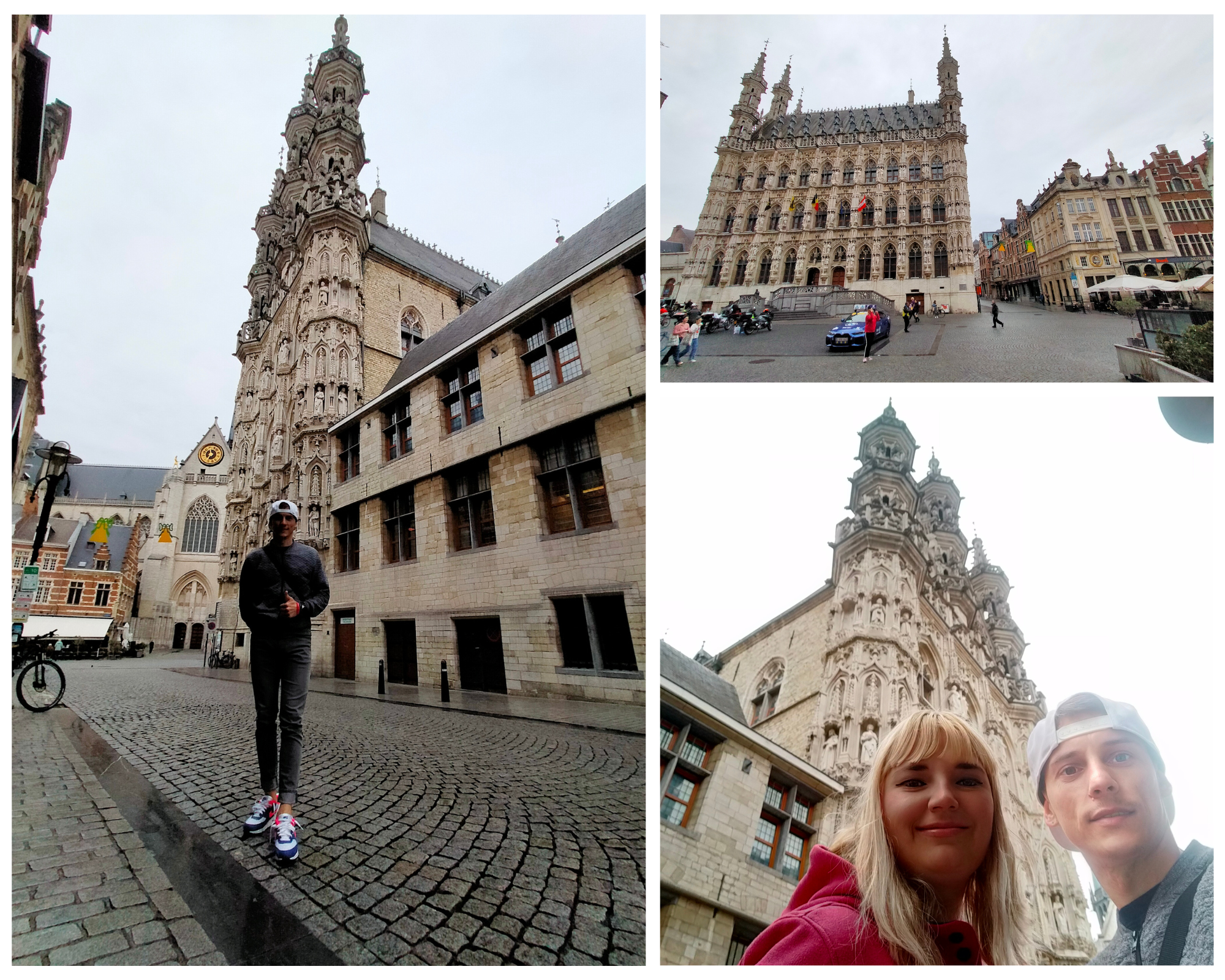
Source : Traveldreamdiary.com
The Leuven Museum
M – Museum Leuven, or just M, is an art museum located in Leuven, Belgium’s inner city. It was formally opened in 2009. The museum’s collection of about 46,000 pieces includes late-Gothic paintings and sculptures, as well as works by 16th-century Flemish masters like Constantin Meunier, Jef Lambeaux, and George Minne, as well as works by contemporary artists like Jan Rombouts the Elder and Josse van der Baren.M: The Museum The municipal museum in Leuven has been operating since the early 1800s. The first museum opened its doors on the second floor of the city hall in Leuven in 1823. The collection was relocated to Leuven’s historic center, to the former private mansion of Mayor Leopold Vander Kelen, approximately a century later. Currently, M Museum’s main display area is located here.
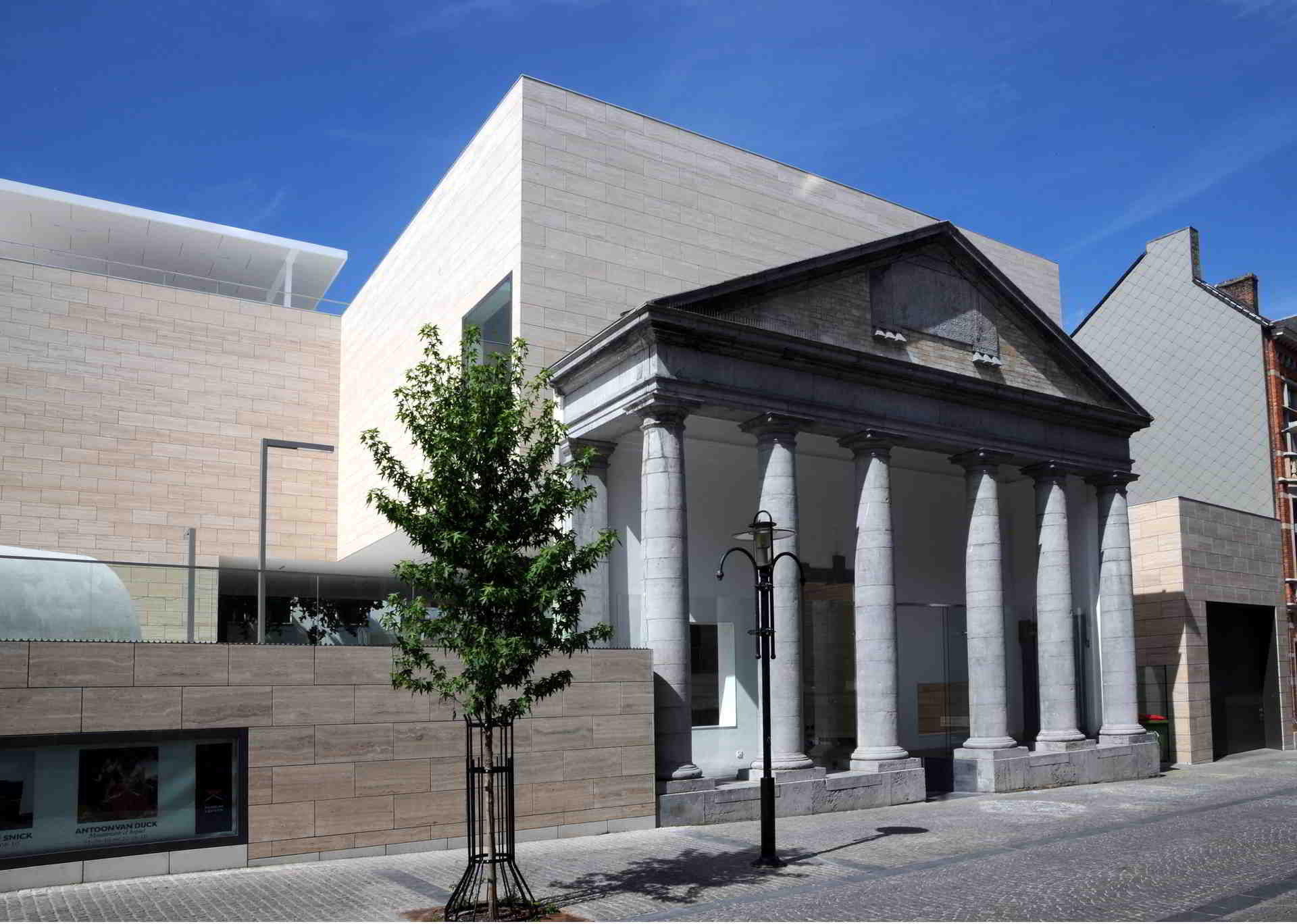
Source : Facebook
The Grote Markt
The Grote Markt, often known as the “Big Market” in Dutch, is the main square in Leuven, Flemish Brabant, Belgium. It is close to the Bondgenotenlaan (“Avenue of the Allied Forces”) and the Muntstraat (“Mint Street”), and it is located between the Oude Markt (“Old Square”) and the Rector De Somerplein (“Rector De Somer Square,” named for Pieter De Somer, the first rector of the autonomous Dutch-speaking Katholieke Universiteit Leuven (KU Leuven) in 1968). The Grote Markt is one of the busiest squares in Leuven since it crosses some of the city’s most well-known and popular tourist destinations. The square has been pedestrian-friendly for a while now; the only vehicles permitted to use it are De Lijn public transportation buses.One of Leuven’s oldest and most significant locations is the Grote Markt. Since the Old University of Leuven was founded in the fourteenth century, the square has existed in its current configuration. The Town Hall is one of the best examples of the Gothic architectural style used in the majority of the square’s structures. A few guildhalls and the Church of St. Peter are among the other structures on the Grote Markt. The Grote Markt has a great deal of restaurants, bars, and taverns, much like the rest of Leuven. The more contemporary, youth-focused, and student-focused entertainment venues on the neighboring Oude Markt provide a stark contrast to the more formal and historic style institutions on the Grote Markt.
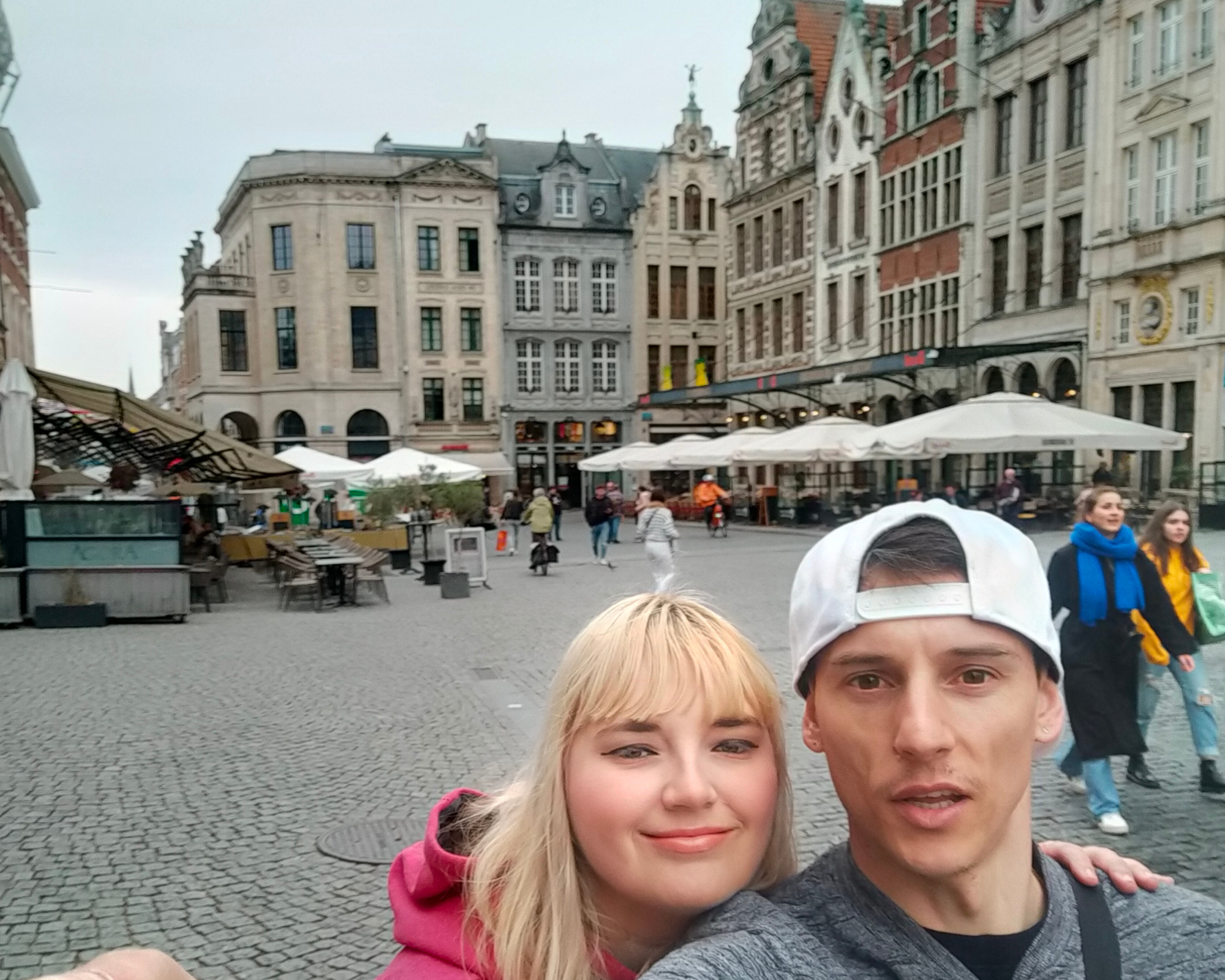
Source : Traveldreamdiary.com
Saint Peter's Church
Built in the 15th century in the Brabantine Gothic style, Saint Peter’s Church is a Roman Catholic church located in Leuven, Belgium. The church features an unfinished short bell tower and a cruciform floor design. Its length is 93 meters, or 305 feet. It is situated across from the Town Hall on the Grote Markt, the city’s central plaza. In 1999, the church’s bell tower and belfry were included in the Belfries of Belgium and France site of the UNESCO World Heritage List, a testament to the architectural and civic significance of the belfries in the area.
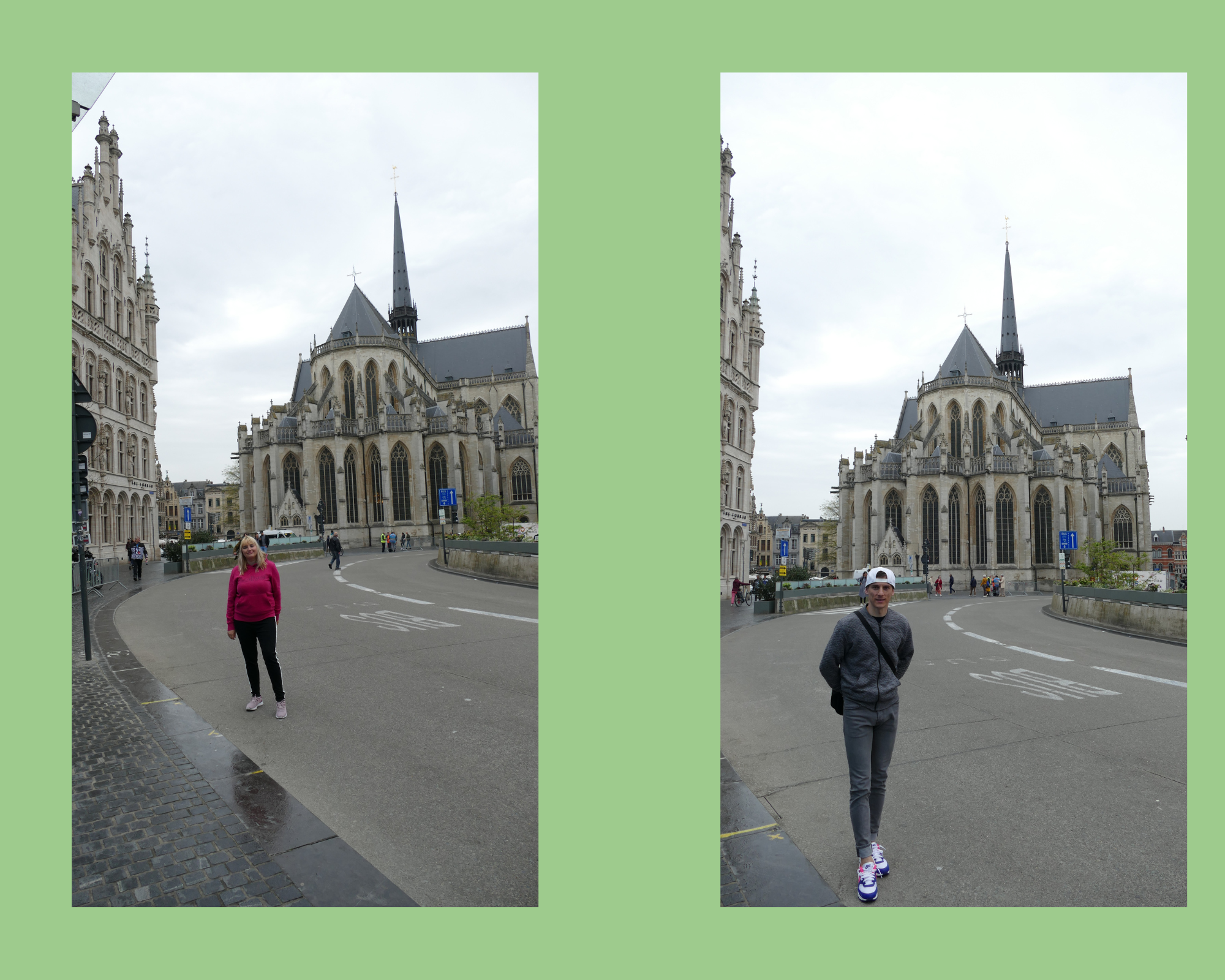
Source : Traveldreamdiary.com
Arenberg Castle
Located in Heverlee, near Leuven, Belgium, Arenberg Castle (French: Château d’Arenberg, Dutch: Kasteel van Arenberg) is a château in the Flemish Renaissance style. It is encircled by green space. The current château was begun in the 16th century and had numerous renovations in the years that followed, replacing a medieval stronghold from the 12th century. The Arenberg family acquired it in 1612 and lived there until the First World War. These days, the Katholieke Universiteit Leuven (KU Leuven) owns the building.Since the 12th century, the location has been home to the Heverlee lords’ castle; nevertheless, due to their financial hardships, the family had to sell the property in 1445 to the Picard Croÿ family. After demolishing the medieval fortress, Antoine I de Croÿ began construction of the present château in 1455, destroying all but one of its towers. William de Croÿ, his grandson, finished the construction of the château in 1515 and established a Benedictine Celestines monastery on the château grounds.
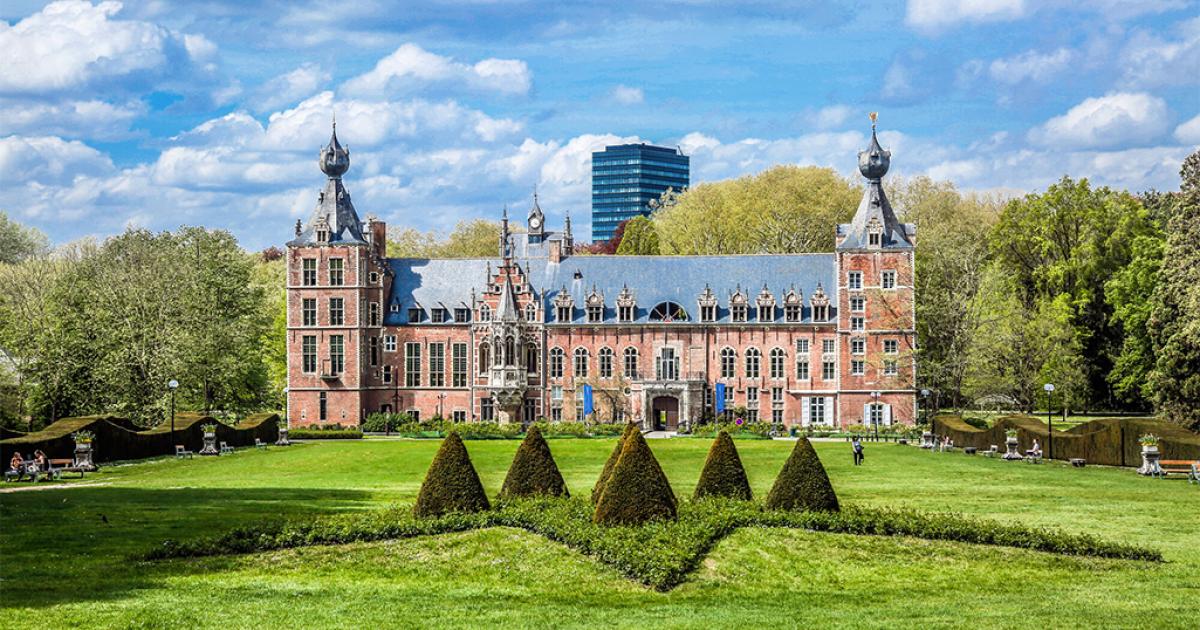
Source : Facebook
Kruidtuin
Founded in 1738, the Hortus Botanicus Lovaniensis (also known as the Kruidtuin in Dutch) is a botanical garden located in Leuven, Belgium. It is 2.2 hectares in size and located in the heart of the city.Professor of Medicine at the University of Leuven Henri-Joseph Rega founded the city’s first botanical garden in 1738.[1] Initially, it was to supply medicinal herbs. Subsequently, the gardens were turned into research facilities and housed a sizable collection of uncommon, decorative, and potentially profitable species.The state took control of the botanical garden after the institution was shut down in 1797. Beneath the ancient park, a botanical garden was reconstructed in the 1820s under the direction of the newly formed State University of Leuven. The new botanical park was turned up to the city government when the State University ended in 1835. The old 1738 botanical garden was replaced by a girls’ school in 1874, but the more recent 1820s garden is still in use today as a city park.Both residents and visitors frequently use the free access. The garden occasionally serves as a venue for the display of contemporary art.
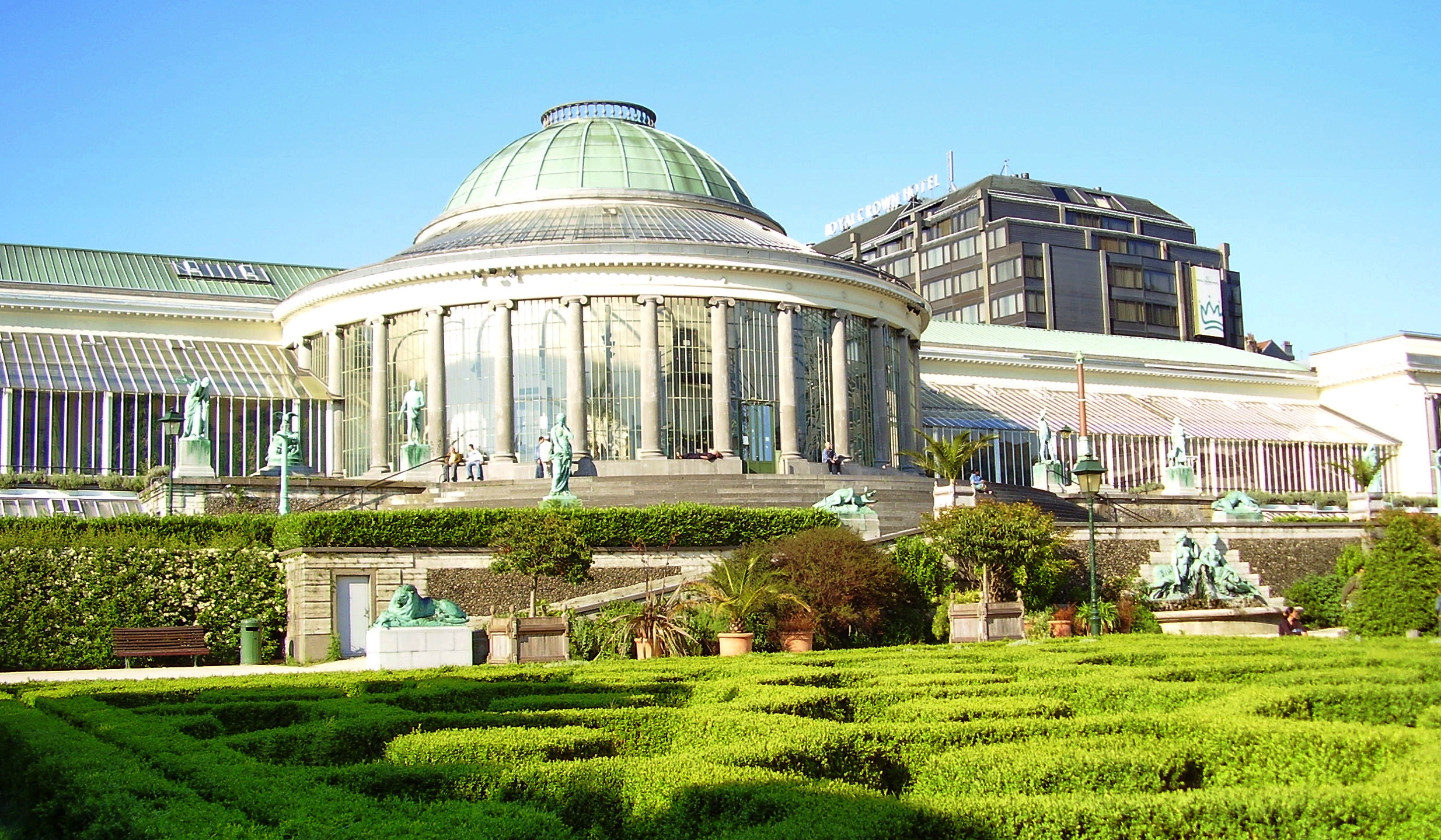
Source : Facebook
Park Abbey
Park monastery, also known as Parc Abbey or Abdij van Park in Dutch, is a Premonstratensian monastery located in Flemish Brabant, Belgium, in Heverlee, a short distance south of Leuven. It was here in the twelfth century that the Annales Parchenses were composed.Known by his moniker “Barbatus” (“the Bearded”), Duke Godfrey of “Barbey” constructed the abbey in 1129. He invited the Premonstratensians to take over a modest church he had built in an enormous park near Leuven.A colony of Walter’s canons was moved to St. Martin’s in Laon, and he presided over them for almost three years until the canons, now numbering sufficiently, chose Simon, another Laon canon, to be their new abbot. In defiance of the heretic Tanchelm, the canons carried out the general ministry tasks in the Leuven district.
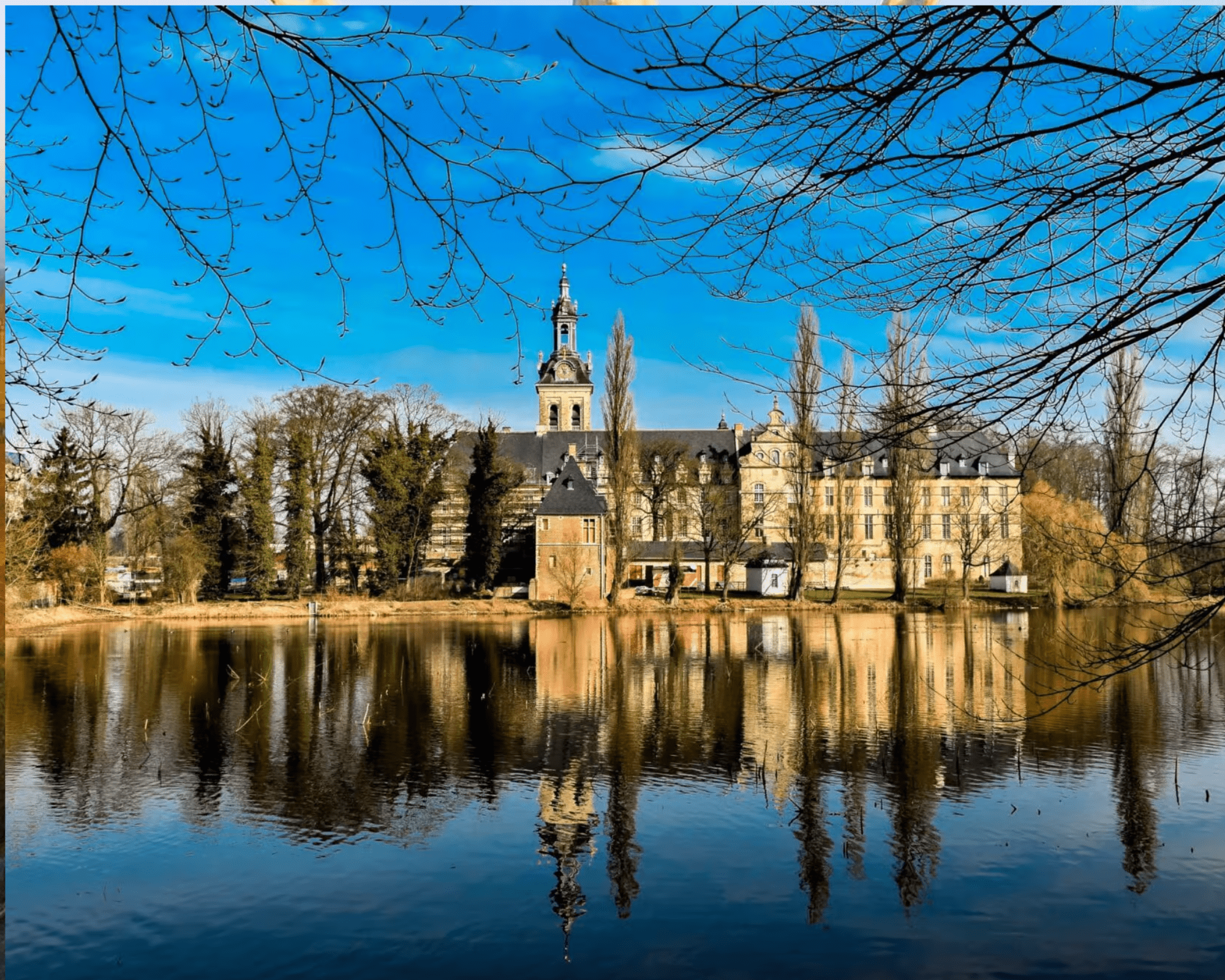
Source : Facebook
Book your perfect vacation!
Vacations: We are happy that we have the opportunity to work with the most famous companies in the world, we always order our vacations from these companies and we have never been disappointed: Check 24, Trivago, Trafalgar, TravelUp, Insight Vacations, Explorer Fernreisen.
Where to stay
Hotels, bed & breakfasts, and guesthouses, regardless of location—in the center of town, close to a lake, or amid natural surroundings. We were able to identify the top companies providing the best hotels: Booking.com, Trip.com, TravelUp, esky, Hoteltopia, Millennium Hotels and Explorer Fernreisen.
What to eat
Any trip to Belgium must have at least a few servings of frites, also known as fritjes. The North Sea mussels from Mosselen are meatier than those from France. The filet Americaine, or raw minced beef combined with seasonings, mayonnaise, and egg yolk, is the main ingredient of the Belgian sandwich known as the Martino. Ham and Belgian Endive Gratin Croquettes avec gritty crevettes Waterzooi is a fish or chicken stew or soup that also contains veggies, cream, and eggs.

Photo Source : traveldreamdiary.com
Regardless of linguistic differences, meatballs remain a beloved dish in Belgium and are typically made with a combination of beef and pork. Meat stew in a Flemish stew croquettes of grey shrimp The dish called “eel in the green” is precisely what it sounds like: an eel cooked in a vibrant green sauce that gets its color from the use of numerous green herbs, including basil, watercress, and parsley. mashed potatoes and sausage Tomatoes with Green Crevettes

Photo Source : traveldreamdiary.com
Waffles from Belgium Speculaas: Gingerbread cannibines are cut into triangles and served on pain de mie, a type of delicious white toast. Biscuits with a short crust Chocolates from Belgium Sirop de Liege

Photo Source : traveldreamdiary.com
Restaurants
With its excellent reputation, Enoteca has swiftly established itself as Liège’s favorite place to get Mediterranean cuisine. The kitchen is open so that guests may observe the preparation of their meal, and the chef is completely confident in his skills. Because the menu is small, it speaks to the chef’s talent. This place had speedy and friendly service. A chophouse restaurant with a focus on beef is called Maison Leblanc. Although the setting is lovely and the cuisine is excellent, this is not a romantic place—there is only meat. There are various vegetarian dishes offered, as well as a vegetarian plate devoid of meat, which will please vegetarians.
La Cucinella is an elegant, rock ‘n’ roll-inspired take on a typical Italian restaurant. The interior features elaborate, vividly colored furnishings framed in an Art Nouveau style. Traditional Italian fare with a touch of rock ‘n’ roll is available on the menu. One such dish is osso bucco, which is beef tenderloin served with pappardelle pasta, fresh vegetables, and a mouthwatering sauce. The Huggy’s Bar is a well-liked destination for travelers in Liege, offering an extensive menu of burgers and beverages. It’s a terrific option for people who are dining out because it now offers vegetarian and vegan options. The costs are reasonable and the personnel is nice. But before you pay, make sure you verify the bill—there have been a number of reports of errors on this front.
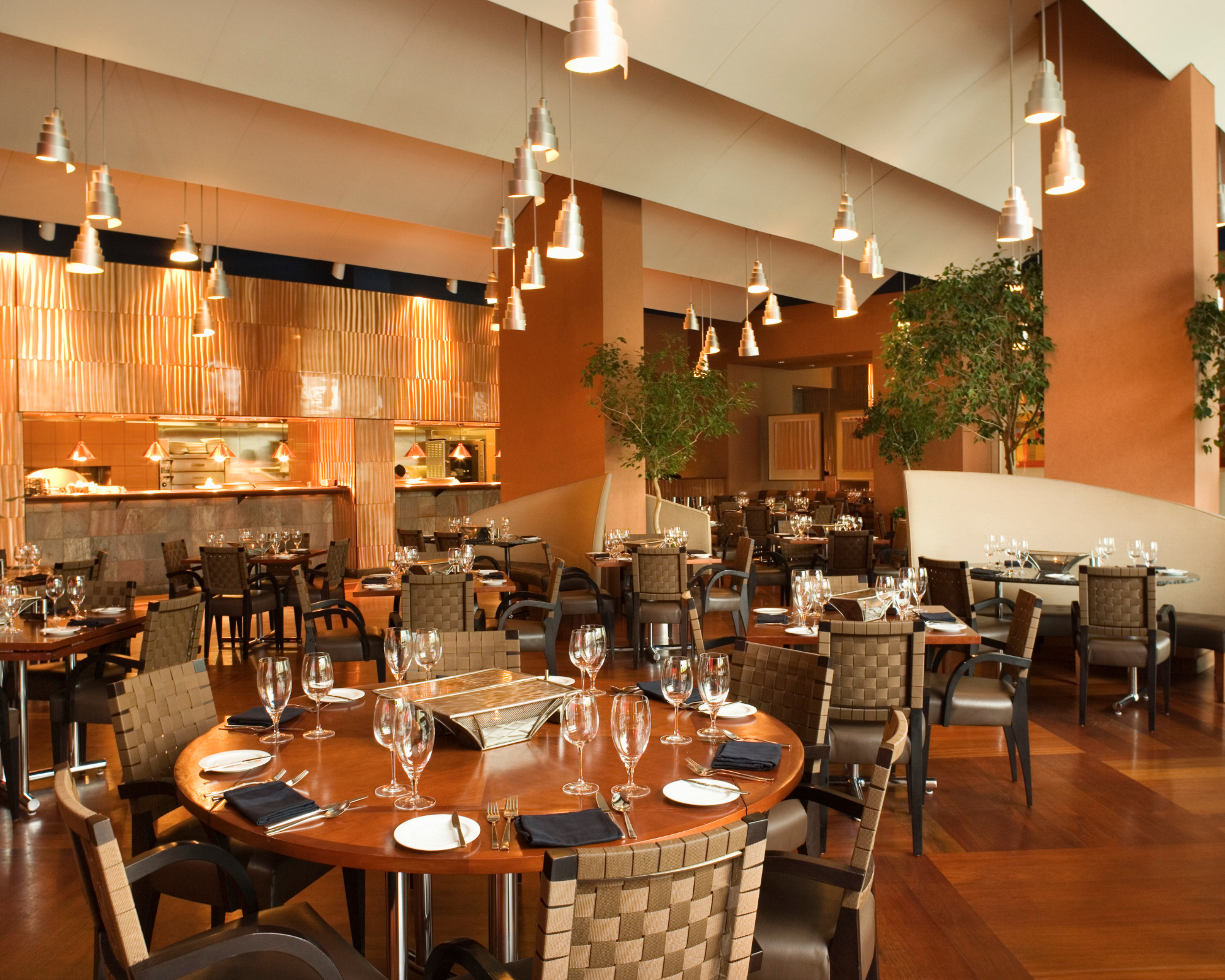
Photo Source : OanaAlexandra on canva.com
Leuven’s Italian hotspot, the Rossi Pasta Atelier! Situated in the Forge, a stunning and distinctive example of industrial legacy, this location was once used by the Stella Artois brewery to forge its brewing kettles. The Smidse has been converted into a covered, artisanal food market while maintaining its rustic character. At the d’Artagnan restaurant, integrity, freshness, and regard for the goods are paramount. Both inventive innovations and classics are available on the menu. Restaurant d’Artagnan has been owned and operated by Ernest and Sandra, a catering couple, since 2000.
The elegant De Hoorn cafe is housed in a former 1366 brewery. These days, you may dine, work, and have a good time in this grand edifice that is an open and creative hub. Anything from a fast snack to a substantial meal is achievable! For many years, Zarza, which means “blackberry” in Spanish, has been a well-known name in Leuven cuisine. Here, in a quiet, Scandinavian setting, quality and hospitality are paramount. There are unexpected foods on the menu that have distinct flavor bursts. Visit us as soon as possible to enjoy the city garden in the summer!
Saving Tips
Restaurants can be very pricey on weekends and in the nights in popular areas of the nation. This nation boasts the most number of breweries worldwide per person! that the least expensive type of alcohol is beer When dining out, limit your options to items like sandwiches, kebabs, and frites. These dinners run from 5 to 7 euros. In plant-based heaven, every Thursday is designated as “vegetarian day.” Gent

Photo Source : OanaAlexandra on canva.com
The public can tour the European Parliament for free and visit the museum of military history at no cost thanks to low-cost bus companies like Flixbus. Obtain a tourist card for the city.
Book your tours!
Tours: If you do not go by car and need to know more information about the tours, and things to see, we recommend these companies that are offering tours for any kind of activity you want to do and where you can buy trips much cheaper than if you buy them when you arrive at your destination. It is always good to be able to save some money!
Viator, Get Your Guide, Tiqets, City Sightseeing, Sesame, Sightseeing Pass, Contiki, Riviera Travel, CityPass: the best activities in town!
Shopping
Leuven’s retail avenues provide an excellent blend of big-box stores and cozy boutiques offering a wide range of products, from cutting-edge accessories to well-made vintage pieces. There are certain stores that have steadfastly endured the test of time, as well as new pop-ups that coexist peacefully with the famous names. For over 30 years, these stores have been a mainstay on Leuven’s retail avenues. We’d like to present a few of these “Pearls of commerce” to you.
The top shopping avenues in Leuven are listed below: In the heart of Leuven’s old district, Diestsestraat is a major shopping avenue that is flanked by St. Peter’s Church and stores. Two of the main shopping avenues in the heart of Leuven are Bondgenotenlaan and the adjacent Diestsestraat, both of which have stores, cafes, and restaurants. In the heart of Leuven’s historic district, Brusselsestraat is a bustling pedestrian shopping route with a wide variety of stores and marketplaces.
In the historic core of Leuven, Tiensestraat, Muntstraat, and Naamsestraat are student-friendly shopping lanes that are dotted with stores and restaurants. The busy cafes, clubs, and restaurants encircling the historic square known as Oude Markt serve as Leuven’s social hub. Small streets off of Oude Markt, Parijsstraat and Pensstraat, are lined with unique stores, cafes, and nightlife. Mechelsestraat and Vismarkt, which run parallel to one other, are pedestrian streets lined with food stores, marketplaces, and boutiques.

Photo Source : OanaAlexandra on canva.com
Neuvice is the oldest pedestrian avenue in Liège and one of the few streets that has maintained its medieval layout. Everybody is sure to find their heart’s content, whether it’s from little cafés to concept stores, from cheesemongers to chocolate producers, or from leather goods stores to tea salons! Were you aware that this street was home to a well-known hotel? The architecture of the Hotel Neuvice, which consists of three 18th-century houses arranged around a charming courtyard, will captivate you.
Rue Souverain-Pont’s charming little eateries, which include flavors from across the globe, along with its concept stores and souvenir shops, make it a desirable place to browse! It is the perfect site for you if you enjoy vintage shopping, fashion, design art, and arty things. The well-known large retailers are located in the Saint-Paul neighborhood. Le Carré, a pedestrian-only zone, is a luxury shopping haven. This smart area in Liège for window shopping is perfect for you if you have a thing for high-end fashion or décor goods!
Constructed in 1836, the esteemed Passage Lemonnier is a covered gallery located in the center of Liège. This vibrant center offers upscale clothing and accessories, as well as handcrafted goods and a variety of businesses, including spots to grab a bite to eat or a drink. Stretching 168 meters in length and housing approximately thirty stores, it connects the pedestrian area of Vinâve d’Ile to rue de l’Université. The rue Lulay-des-Fèbvres also crosses it in the center. A great place to go shopping in the rain!
While Sundays are often considered to be rest days, there is one exception: the Grand Léopold district. The La Batte market is the beating heart of the perfect tourist destination. The oldest market in Belgium, it is a true institution. Its vibrant kiosks offer cheeses, fruit and vegetables, clothing, flowers, books, and other items. With its three shopping centers, Liège is a shopping paradise for mall aficionados. Belle-île is located in Angleur, Médiacité is in the Vennes neighborhood, and the Saint Lambert gallery is in the city center.
Getting Around
Traveling within Belgium is nearly always simple due to its small size and incredibly well-organized, fairly priced public transportation system, which consists of an extensive train network complemented by several local bus routes. The best ways to go around the city are via the metro and tram. They transport you to several locations throughout the city in a safe and timely manner with little to no interference from other types of traffic. In the cities of Charleroi, Ghent, Antwerp, and Brussels, tram transit is available.
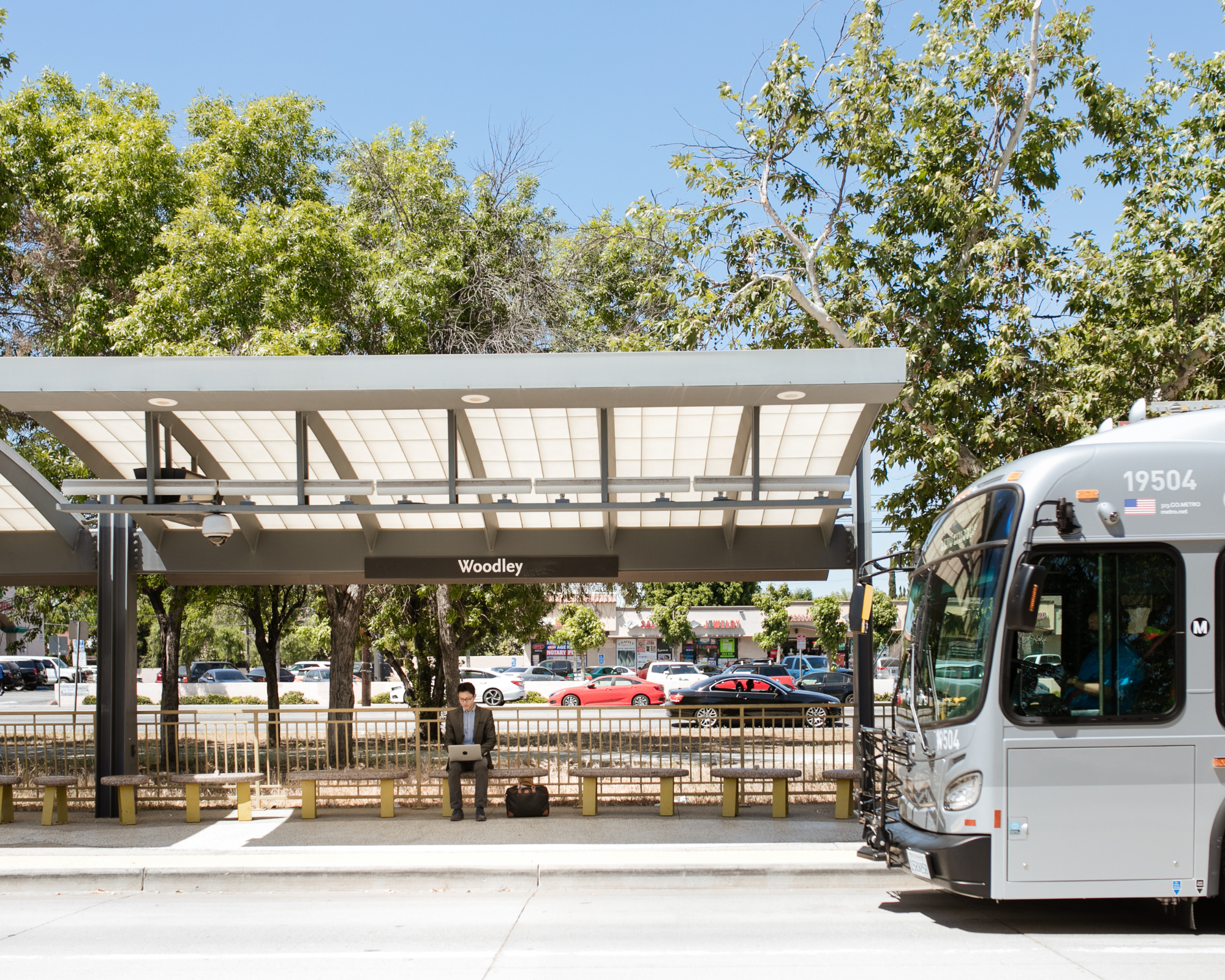
Photo Source : OanaAlexandra on canva.com
The bus network serves a large area not covered by other public transportation options, making it a convenient mode of transportation. Three distinct companies administer the bus routes in Belgium. Ghent’s car-free city core is ideal for bicyclists and pedestrians. Even on weekend evenings, you may simply and swiftly go to any area of the city with the bus and tram, and taxis are also widely accessible. Of course, renting a car is another option if you want to see the area.
Book your transport!
Rent a car!
Here you can find the best offers to rent the right car for you, as well as parking right in the airport: esky, Explorer, Centauro and intui.travel.
Getting Here
Although Ghent lacks an airport of its own, it is conveniently accessible from Brussels Airport and Brussels South Charleroi Airport, Belgium’s two major airports. Located 14 kilometers east of Brussels, Brussels Airport (Zaventem) serves hundreds of international locations. Brussels South Airport serves 26 European destinations and is located in Charleroi, 46 kilometers from Brussels.
The quickest and easiest way to get to Belgium is via plane. The most common way is to take a plane to Brussels, the nation’s capital, which has excellent bus and rail connections to the rest of the nation. The primary international airport in the nation, Brussels Airport (Zaventem), offers flights to more than 220 locations around Europe and beyond. Flying into Brussels South Airport in Charleroi, which is about 50 kilometers outside of Brussels, is an additional choice. This airport connects Belgium with 190 destinations.

Photo Source : OanaAlexandra on canva.com
When it comes to choosing how to go to Belgium, travelers from the UK are spoiled for options. London and several regional airports offer flights to Brussels; Eurostar trains arrive directly in Brussels; ferries run from Rosyth and Hull to Zeebrugge, close to Bruges, and from Ramsgate to Ostend; Eurotunnel services run from Folkestone to Calais, a short drive from the Belgian coast; and regular international buses travel from London to Brussels and Antwerp. Buses are typically the least cheapest mode of transportation, but trains are quicker and frequently not that much more expensive, and there are many of amazing flying discounts as well.
Book tour Flights!
If you have not found your desired flight, or you simply want more flight options to find the best and cheapest, we will help you with the best flight plans, where you will definitely find what you are looking for. With just one click you will find the cheapest flights to a wonderful destination!


